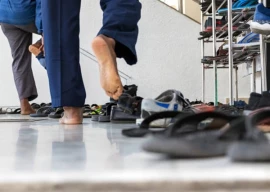
With Fata being merged with Khyber-Pakhtunkhwa, an incorrect and hasty decision has arguably been taken by the outgoing parliament and K-P Assembly. The real problem will start to unfold when the merger process is carried out practically, because a constitutional amendment can only provide a policy direction; it is the implementation stage of the policy that will be troublesome.
The basic objectives of political forces and institutions desirous of the Fata merger have been three. First, the grave security issues of Fata and the security threat therefrom to the country could be negotiated by making the region part of K-P. Secondly, the political vacuum in Fata could be plugged. Thirdly, the administrative structure and legal framework of Fata have been retrogressive and extremely inefficient to look after the basic needs of the residents of the region. Thus the benchmark of success of the merger would be whether security there improves, the political vacuum is meaningfully overcome and residents of the region start seeing their basic needs fulfilled.
On the contrary, there is also a possibility of the security situation worsening in the entire province following the merger due to contagion effects of the prevailing adverse conditions in the erstwhile Fata. If this does not happen, there is still a possibility of the emergence of new security issues. In case of such an eventuality, one does not think that our government institutions have all what it takes to deal with the situation. Although with the merger the grave issue of political vacuum has been somewhat addressed, it would be naïve to think that the problem has been sorted once and for all as there are many other facets of political vacuum in the region. It would also remain to be seen whether the merger would result in affecting the administrative efficiency in the former parts of K-P instead of it improving in Fata.
Here the role of the authorities of K-P would become extremely instrumental in successful integration of Fata into the province. There would also be a need of suave and erudite change management mechanism and skills on the part of the K-P authorities.
The foremost challenge for the K-P bureaucracy dealing with Fata is the process of establishing a vibrant and effective policing and local government system there. A modern policing system and local government structure have never existed in Fata. There is a plan that the existing levies personnel (locally called Khasadars), recruited on quota basis from each local tribe, has to be transformed into police personnel and would be imparted police training. However, this plan has many issues because policing means to rise above one’s tribal or ethnic identities and work as a professional force. So it would be well-nigh impossible to convert the levies force personnel into police.
Putting into place an effective local government system in Fata is the solution to many issues of security and governance. Although a lot of ground work has been done by the Fata secretariat in this regard that also came up with a draft of Fata LG system, implementation on it has remained a far cry.
After becoming a part of K-P the erstwhile region would also have to adopt the K-P LG system. However, many changes to the K-P LG law would need to be tailored to the objective conditions prevailing in the tribal region. This is not an easy task.
The Fata-K-P merger would only be meaningful if large-scale development is carried out in the region as the merger alone would not serve any purpose. The previous PML-N government announced that it would spend Rs1,000 billion in the next 10 years or Rs100 billion per year on the process of reconstruction and development in Fata. From where would such a huge amount come from is anybody’s guess. Secondly, is this amount sufficient to put the region on the track of development?
Published in The Express Tribune, June 6th, 2018.
Like Opinion & Editorial on Facebook, follow @ETOpEd on Twitter to receive all updates on all our daily pieces.































































COMMENTS
Comments are moderated and generally will be posted if they are on-topic and not abusive.
For more information, please see our Comments FAQ